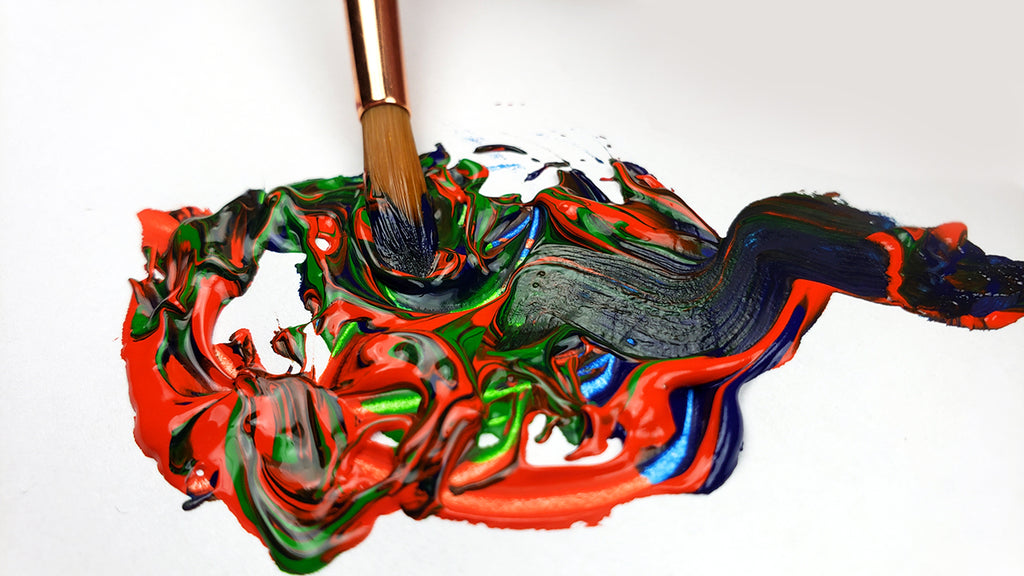It’s time to learn about gouache, and start painting with it too. So grab your gouache painting supplies and let’s paint!

What is Gouache
Gouache is an opaque paint, which means it is not transparent like watercolor. It is a thick, water based paint bound with a gum arabic binder, and mixed with a white pigment. It also has a velvety matte texture when dried. It can also be reactivated, like watercolor, when dried.

Gouache has the consistency of watercolor, and the opacity of acrylic. It’s like a hybrid of the two. It can also be used on a variety of surfaces, like wood, glass, ceramic, etc., because of its opaque nature. Unlike watercolor, you do not want to add water to lighten the colors. Instead, you’ll want to add white paint to achieve lighter colors.
How to Use Gouache
The nice thing about gouache paint, is that aside from mixing colors, there is no prep time. It comes pre-wet out of the tube, so all you have to do is add water and paint.
When using gouache, you don’t want to work straight out of the tube. You’ll want to dilute it with water, to achieve a cream-like consistency for best results. The reason you don’t want to add too little or too much water, is because the paint will either crack or be too thin, respectively.
After you have mixed all the colors that you want to paint with, the next step is to paint. When painting with gouache, you’ll want to follow a few simple rules. Your base layers should be the thinnest, diluted with the most water. As you work on each new layer, keep adding less and less water. The less water you have in the paint, the less likely you are to reactivate the previous layers. The second rule is to work from your darkest shades, into the lighter shades. This is how to get the smoothest blending, without reactivating your layers. Since gouache dries so quickly, you’ll want to work fast, and working dark to light helps with that. However, this last rule isn’t necessary, unless you want smooth blending. If that’s not what you’re looking for, feel free to experiment!
One thing to note, is that gouache doesn’t work too well with the “wet into wet” technique. The paints tend to resist each other, instead of mixing. So, all the blending you will want to do, should be controlled with a paintbrush, like with acrylics. Keep in mind, lighter gouache colors tend to dry darker, and darker colors tend to dry lighter.
Gouache Techniques
You can perform a few different techniques with gouache paint. First, there is the “light to dark” technique. This is where you paint light colored layers, and then add your shading on top.
Next is the “dark to light” technique, which is where you start painting your dark shadows, and work in your lighter colors.
Then, there is “dry brushing.” Just like with watercolor, this is where you add little to no water to your paint to get a textured look.
Gouache is also great for linework because of its viscosity and opaqueness.
The last technique is to use water to soften the edges of the paint. Now, doing this over another lay could reactivate the previous layer, and pull it up, so be very cautious with this one.
So, now that you’ve learned the basics of painting with gouache, grab your paints and experiment to see which painting style suits you!
Article by McCaela Gates
Made especially for MyArtscape



